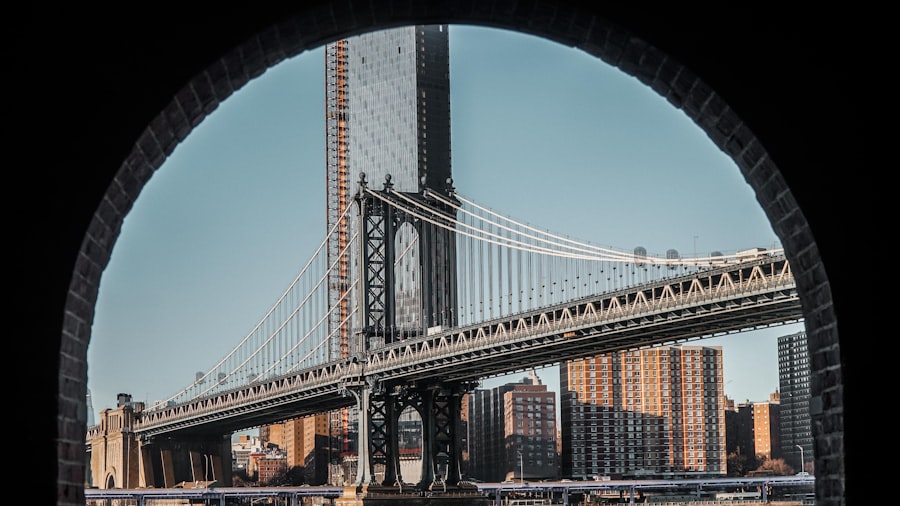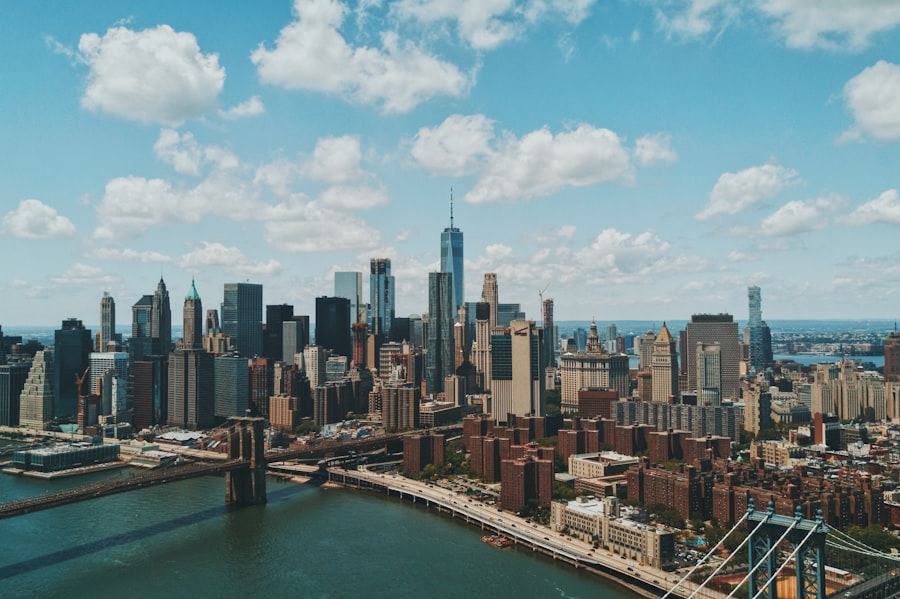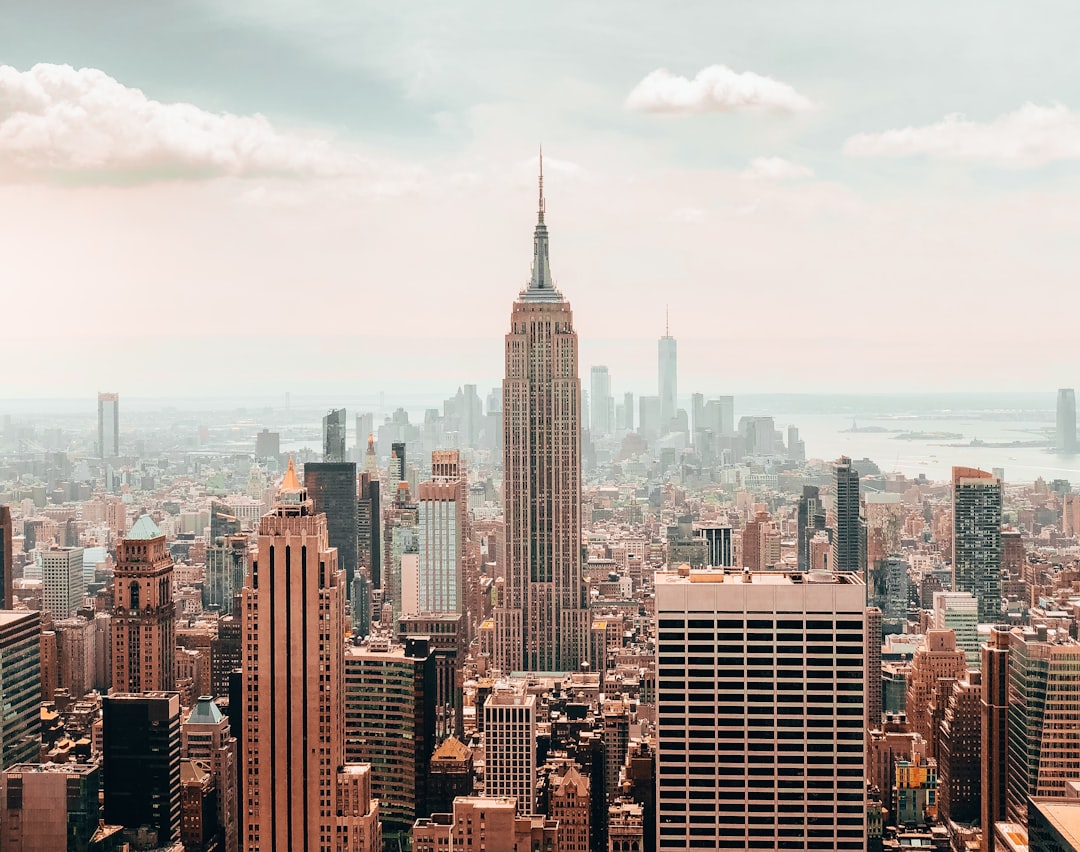New York City, often referred to as the Big Apple, boasts a rich and complex history that dates back to its founding in the early 17th century. Originally inhabited by the Lenape Native Americans, the area was first explored by European settlers in 1524 when Giovanni da Verrazzano sailed into New York Harbor. However, it was not until 1624 that the Dutch established a permanent settlement, naming it New Amsterdam.
This settlement served as a vital trading post, and its strategic location made it an attractive target for other colonial powers. In 1664, the British seized control of New Amsterdam and renamed it New York in honor of the Duke of York. Over the next century, the city grew rapidly, becoming a melting pot of cultures and ethnicities as waves of immigrants arrived seeking new opportunities.
The American Revolution saw New York play a pivotal role, serving as a battleground and later as the nation’s first capital. The city continued to evolve through the 19th and 20th centuries, marked by industrialization, immigration, and significant events such as the construction of iconic skyscrapers and bridges.
Key Takeaways
- New York City has a rich history, from its early days as a Dutch trading post to its rise as a global cultural and financial hub.
- Some of the best neighborhoods to explore in New York City include Greenwich Village, SoHo, and Williamsburg.
- Iconic landmarks and attractions in New York City include the Statue of Liberty, Central Park, and Times Square.
- The food scene in New York City is diverse and vibrant, with options ranging from world-class fine dining to delicious street food.
- Navigating the public transportation system in New York City can be overwhelming, but it’s efficient and essential for getting around the city.
The Best Neighborhoods to Explore
New York City is a tapestry of neighborhoods, each with its own unique character and charm. From the historic streets of Greenwich Village to the bustling avenues of Times Square, there is no shortage of areas to explore. Greenwich Village, known for its bohemian atmosphere, has long been a haven for artists and writers.
Its tree-lined streets are dotted with quaint cafes, jazz clubs, and off-Broadway theaters, making it an ideal spot for those seeking a taste of the city’s creative spirit. In contrast, Williamsburg in Brooklyn has emerged as a trendy hotspot for young professionals and creatives alike. With its vibrant street art, artisanal markets, and hip eateries, Williamsburg offers a glimpse into the city’s ever-evolving cultural landscape.
Visitors can stroll along the waterfront for stunning views of the Manhattan skyline or explore the local music scene at one of its many venues. Each neighborhood in New York City tells a story, inviting exploration and discovery at every turn.
The Iconic Landmarks and Attractions

No visit to New York City would be complete without experiencing its iconic landmarks and attractions. The Statue of Liberty, a symbol of freedom and democracy, stands proudly on Liberty Island, welcoming millions of visitors each year. A ferry ride to the statue offers breathtaking views of the harbor and skyline, making it a must-see for anyone visiting the city.
Nearby, Ellis Island serves as a poignant reminder of the immigrant experience, where millions passed through its gates in search of a better life. Another emblematic site is Central Park, an expansive green oasis amidst the urban landscape. Spanning over 840 acres, Central Park offers a myriad of recreational activities, from leisurely strolls along its winding paths to picnics on the Great Lawn.
The park is home to several attractions, including the Central Park Zoo and Bethesda Terrace, providing visitors with ample opportunities to relax and unwind in nature. These landmarks not only define New York City’s skyline but also encapsulate its rich history and cultural significance.
Exploring the Food Scene
| City | Number of Restaurants | Top Cuisine |
|---|---|---|
| New York | 15,000 | Italian |
| Paris | 10,000 | French |
| Tokyo | 20,000 | Japanese |
The culinary landscape of New York City is as diverse as its population, offering an array of flavors from around the globe. From street vendors serving up hot dogs and pretzels to Michelin-starred restaurants showcasing innovative cuisine, food enthusiasts will find something to satisfy every palate. The city’s neighborhoods each contribute their own culinary flair; for instance, Chinatown is renowned for its authentic dim sum and hand-pulled noodles, while Little Italy boasts classic Italian dishes that have been passed down through generations.
Food markets such as Chelsea Market and Smorgasburg provide an opportunity to sample a variety of dishes in one location. These bustling hubs feature local vendors offering everything from artisanal cheeses to gourmet tacos. Additionally, food tours are a popular way for visitors to immerse themselves in the city’s gastronomic culture while learning about its history and culinary traditions.
Whether indulging in a slice of New York-style pizza or savoring a bagel with lox, exploring the food scene is an essential part of experiencing the city.
Navigating the Public Transportation System
Navigating New York City can initially seem daunting due to its vastness and complexity; however, the public transportation system is one of the most efficient ways to traverse the city. The Metropolitan Transportation Authority (MTA) operates an extensive network of subways and buses that connect all five boroughs. The subway system alone comprises 472 stations and runs 24 hours a day, making it a reliable option for both locals and tourists alike.
Purchasing a MetroCard allows visitors to easily access subway lines and buses throughout the city. While it may take some time to familiarize oneself with the subway map and schedules, many find that using public transportation is not only cost-effective but also an integral part of the New York experience. Riding the subway offers a unique glimpse into daily life in the city, where one can encounter people from all walks of life.
For those who prefer above-ground travel, buses provide an alternative way to see the sights while navigating through bustling streets.
Discovering the Cultural Institutions

New York City is home to some of the world’s most prestigious cultural institutions, making it a haven for art lovers and history enthusiasts alike. The Metropolitan Museum of Art, often referred to simply as “The Met,” houses an extensive collection spanning over 5,000 years of art from various cultures around the globe. Visitors can marvel at masterpieces by renowned artists such as Van Gogh and Rembrandt while exploring exhibits that delve into ancient civilizations.
The American Museum of Natural History is another must-visit destination that captivates audiences with its fascinating displays on everything from dinosaurs to space exploration. Its planetarium offers immersive experiences that transport visitors beyond Earth’s atmosphere. Additionally, institutions like The Museum of Modern Art (MoMA) showcase contemporary works that challenge traditional notions of art.
These cultural institutions not only enrich visitors’ understanding of art and history but also contribute significantly to New York City’s identity as a global cultural capital.
Shopping in the City
Shopping in New York City is an experience unlike any other, offering everything from high-end designer boutiques to quirky thrift shops. Fifth Avenue is synonymous with luxury shopping; here, visitors can browse flagship stores from iconic brands such as Gucci and Tiffany & Co. The grandeur of these establishments reflects not only their products but also the opulence associated with this famous thoroughfare.
For those seeking unique finds or vintage treasures, neighborhoods like SoHo and Williamsburg provide an eclectic mix of shops that cater to diverse tastes. SoHo’s cobblestone streets are lined with trendy boutiques and art galleries, while Williamsburg’s markets feature local artisans selling handmade goods. Additionally, department stores like Macy’s in Herald Square offer an extensive selection under one roof, making it easy for shoppers to find everything they need in one place.
Whether indulging in luxury or hunting for hidden gems, shopping in New York City is sure to be an unforgettable adventure.
Enjoying the Nightlife
As night falls over New York City, a vibrant nightlife scene comes alive with endless options for entertainment. From Broadway shows to live music venues, there is something for everyone after dark. Theater enthusiasts flock to Times Square to catch world-class performances in iconic theaters that have hosted legendary productions for decades.
The energy of Broadway is palpable as audiences gather to witness captivating stories brought to life on stage. Beyond theater, neighborhoods like East Village and Lower East Side are known for their lively bars and music clubs that showcase both emerging talent and established artists. Jazz clubs such as The Blue Note offer intimate settings where patrons can enjoy live performances while sipping on cocktails.
Rooftop bars provide stunning views of the skyline, allowing guests to unwind under the stars while taking in the city’s breathtaking scenery. With so many options available, experiencing New York City’s nightlife is an essential part of immersing oneself in its dynamic culture.
Outdoor Activities in New York City
While New York City is often associated with its bustling streets and towering skyscrapers, it also offers numerous outdoor activities for those looking to enjoy nature within an urban setting. Central Park serves as a prime example; this expansive green space provides ample opportunities for outdoor recreation such as jogging, cycling, or simply relaxing on a bench while soaking up the sun. The park’s picturesque landscapes include serene lakes, meandering paths, and lush gardens that invite visitors to explore.
In addition to Central Park, other outdoor spaces like Prospect Park in Brooklyn offer similar recreational opportunities while showcasing unique features such as a lake and botanical gardens. The High Line—a linear park built on an elevated railway—provides a unique perspective on urban greenery with its beautifully landscaped gardens and art installations along the route. For those seeking adventure beyond city limits, nearby hiking trails in places like the Hudson Valley offer breathtaking views and opportunities for exploration amidst nature’s beauty.
Day Trips and Excursions
For those looking to venture beyond the confines of New York City itself, numerous day trips and excursions await just a short train ride away. One popular destination is the historic town of Sleepy Hollow, known for its connection to Washington Irving’s famous tale “The Legend of Sleepy Hollow.” Visitors can explore charming streets lined with historic homes or visit sites such as Kykuit—the Rockefeller estate—offering stunning views of the Hudson River. Another enticing option is a trip to Coney Island—a beloved seaside amusement destination featuring thrilling rides and classic boardwalk fare like hot dogs and cotton candy.
These day trips provide an opportunity for visitors to experience different facets of New York State while creating lasting memories outside the city’s hustle and bustle.
Tips for Making the Most of Your Visit
To truly make the most out of a visit to New York City, planning ahead can significantly enhance one’s experience. First-time visitors should consider purchasing a CityPASS or similar attraction pass that grants access to multiple popular sites at a discounted rate—allowing them to save both time and money while exploring iconic landmarks. Additionally, utilizing mobile apps for navigation can streamline travel throughout the city’s public transportation system—ensuring visitors reach their desired destinations efficiently without getting lost along the way.
It’s also advisable to visit popular attractions during off-peak hours whenever possible; this strategy can help avoid long lines and crowded spaces. Lastly, embracing spontaneity can lead to unexpected adventures—whether it’s stumbling upon a street performance or discovering a hidden gem restaurant tucked away in an alleyway. By balancing planning with openness to new experiences, visitors can create unforgettable memories during their time in this vibrant metropolis known as New York City.
New York City, often celebrated for its vibrant culture and iconic landmarks, continues to be a focal point for travelers and adventurers alike. For those looking to explore the city’s rich history and diverse neighborhoods, a fascinating article on MyGeoQuest offers insights into unique walking tours and hidden gems that even seasoned New Yorkers might overlook. This resource provides a fresh perspective on the city’s ever-evolving landscape, making it a must-read for anyone planning a visit or simply wanting to learn more about the Big Apple’s dynamic environment.
WATCH THIS! The Real Cost of NYC Living: Your Wallet, Sanity, and Subway Survival Skills
FAQs
What is the population of New York City?
The population of New York City is approximately 8.4 million people, making it the most populous city in the United States.
What are some famous landmarks in New York City?
Some famous landmarks in New York City include the Statue of Liberty, Empire State Building, Central Park, Times Square, and the Brooklyn Bridge.
What is the climate like in New York City?
New York City experiences a humid subtropical climate, with hot summers and cold winters. The city also receives an average of 25 inches of snowfall per year.
What are some popular cultural attractions in New York City?
New York City is home to a wide range of cultural attractions, including Broadway theaters, the Metropolitan Museum of Art, the Museum of Modern Art (MoMA), and the Guggenheim Museum.
What are some popular neighborhoods in New York City?
Some popular neighborhoods in New York City include Manhattan’s Upper East Side, Brooklyn’s Williamsburg, Queens’ Long Island City, and the Bronx’s Riverdale.
What is the public transportation system like in New York City?
New York City has an extensive public transportation system, including the subway, buses, and commuter rail. The subway system is one of the largest and busiest in the world.
What are some famous events and festivals in New York City?
New York City hosts a variety of famous events and festivals, including the Macy’s Thanksgiving Day Parade, New York Fashion Week, the Tribeca Film Festival, and the New York City Marathon.
